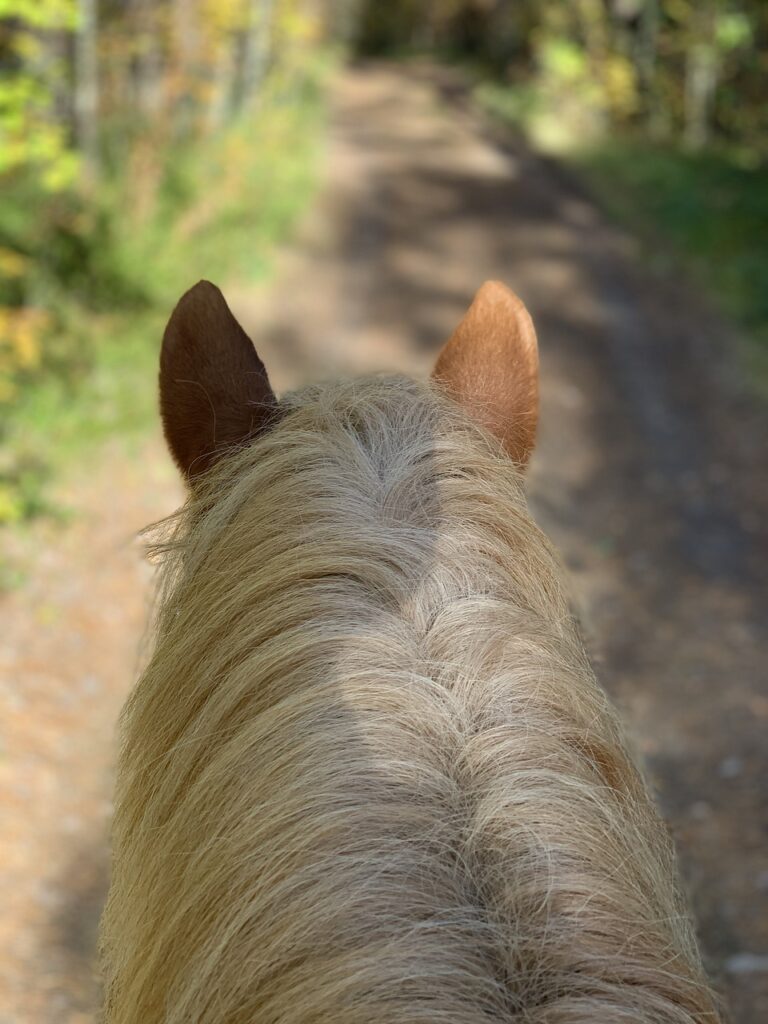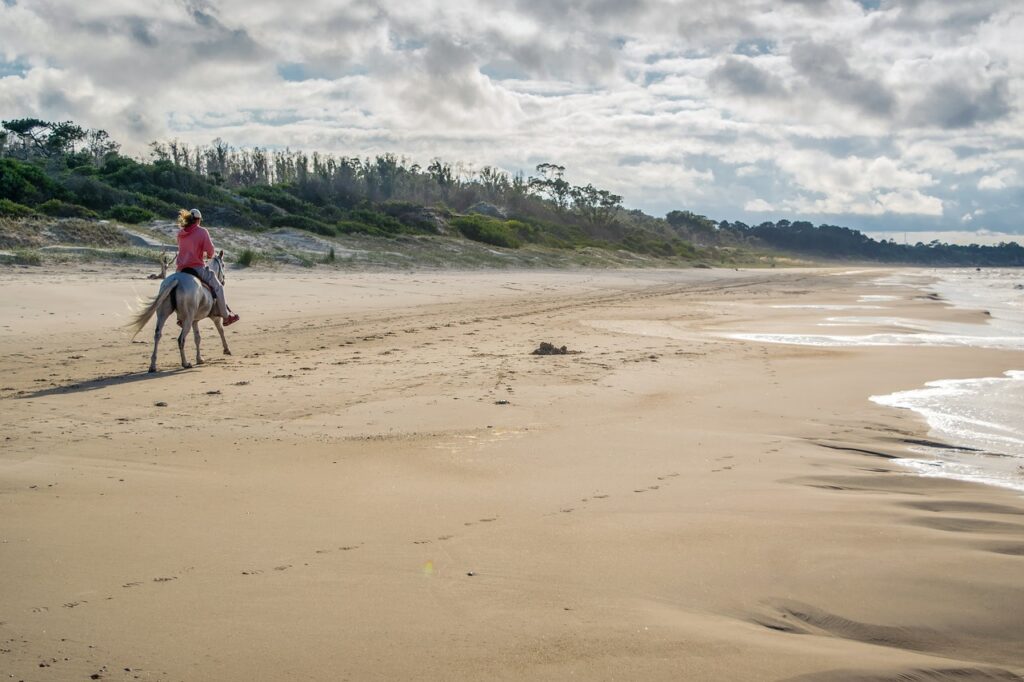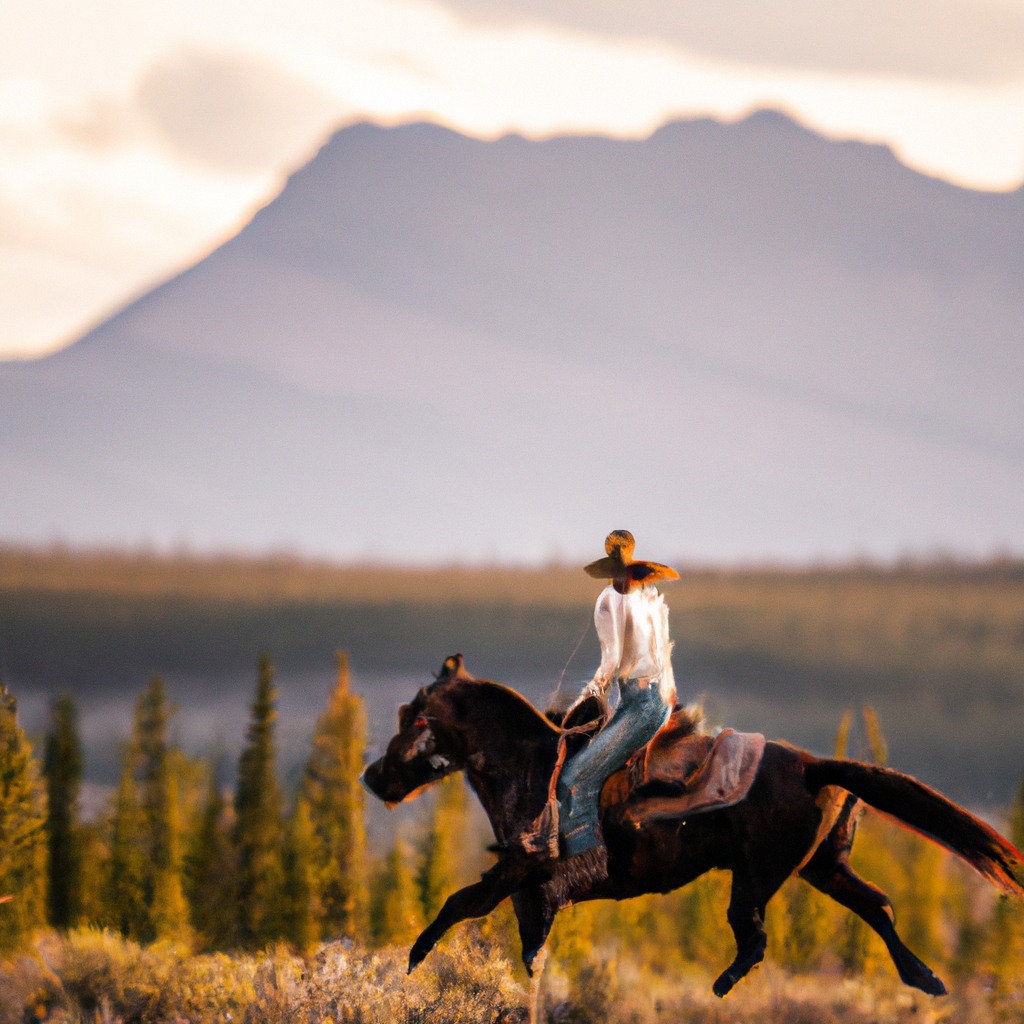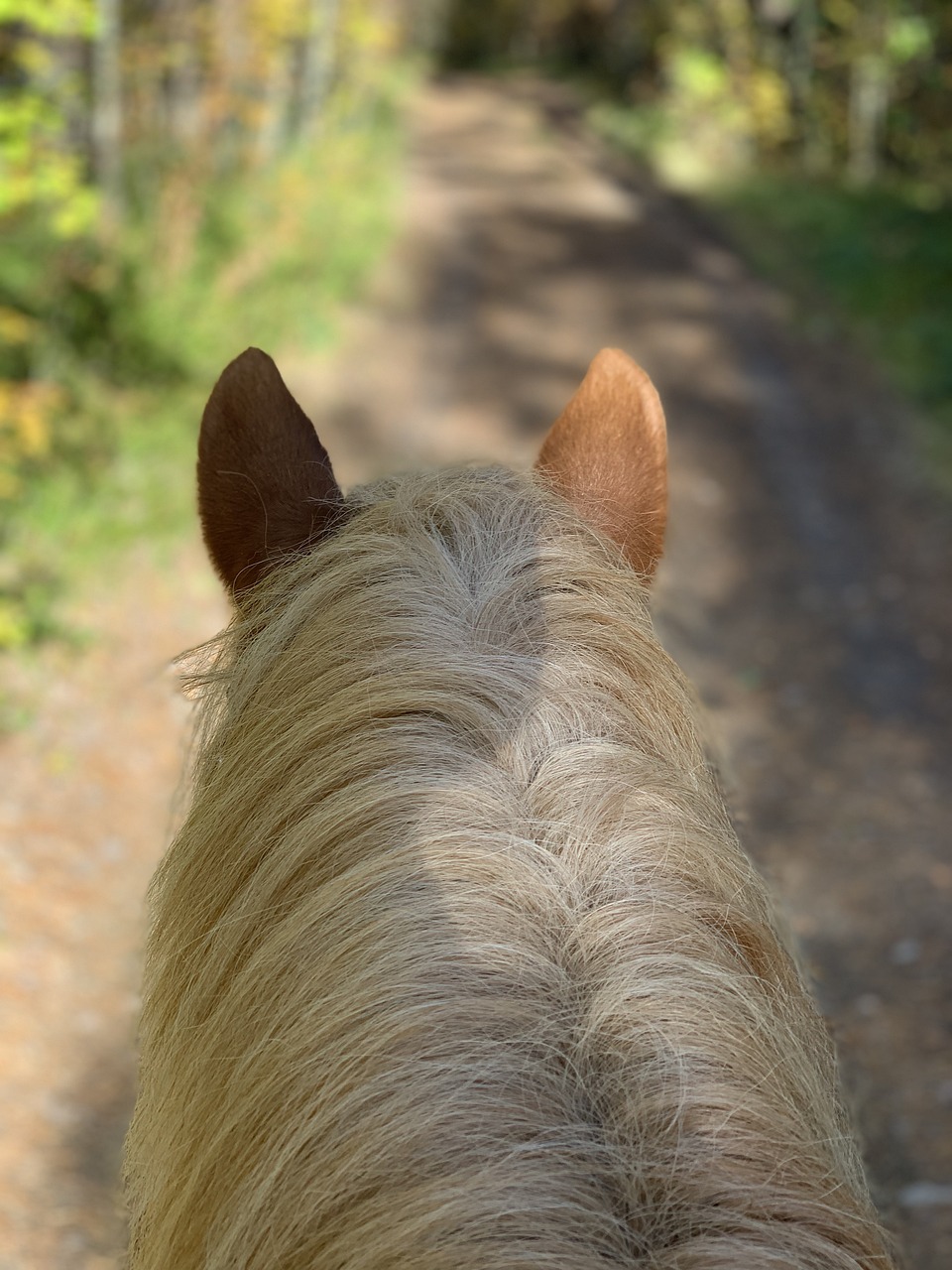Imagine yourself in the serene beauty of the mountains, surrounded by nature’s wonders. The crisp mountain air fills your lungs as you embark on an exhilarating adventure – horseback riding. In this captivating article, we will explore the sheer beauty of horseback riding in the mountains. From the breathtaking landscapes to the sense of freedom and connection with these majestic creatures, this unique experience offers a perfect blend of thrill and tranquility. So saddle up and join us on a journey that will surely leave you yearning for the mountains and the freedom that comes with horseback riding.
The Benefits of Horseback Riding
Horseback riding is not only a fun and thrilling activity but also offers numerous benefits for both your physical and mental well-being. Whether you are a beginner or an experienced rider, exploring the mountains on horseback provides a unique experience that allows you to connect with nature while improving your balance, coordination, and overall fitness level.
Physical Fitness
Engaging in horseback riding requires a certain level of physical fitness as it engages various muscles in your body. Riding a horse helps to strengthen your core muscles, including your abdomen, back, and pelvic floor. The constant adjustments and balancing required to stay on the horse’s back also improve your leg and thigh muscles. Additionally, riding at a faster pace or trotting and cantering can increase your cardiovascular endurance, providing a great cardiovascular workout.
Mental Relaxation
One of the remarkable benefits of horseback riding is the profound mental relaxation it offers. The peaceful and tranquil atmosphere of the mountains, combined with the rhythmic motion of the horse, can help calm your mind and reduce stress. As you connect with your horse and focus on the present moment, you can escape from the daily stresses of life and enjoy a sense of freedom and serenity.
Connection with Nature
Horses have an incredible ability to navigate through even the most rugged mountain terrain, making horseback riding an excellent way to explore the majesty of nature. Riding through lush forests, winding trails, and vast open meadows allows you to immerse yourself in the stunning beauty of the mountains. You can witness breathtaking panoramic views, hear the soothing sounds of nature, and come face to face with wildlife, creating a deep connection with the natural world around you.
Improvement in Balance and Coordination
Maintaining balance and coordination while riding a horse is crucial, especially when navigating mountainous terrain. The constant shifting of your body weight and the need to stay centered on the horse’s back improves your overall balance and stability. Riding also enhances your coordination skills as you learn to communicate and synchronize your movements with your horse. These improvements in balance and coordination can extend beyond the saddle and positively impact your daily life.
Choosing the Right Horse
Finding the right horse is essential for a successful mountain horseback riding experience. Understanding horse breeds, considering your level of expertise, and ensuring a suitable match between horse and rider are crucial steps in choosing the right horse.
Understanding Horse Breeds
Various horse breeds have different characteristics and temperaments. Some breeds are more suited for mountain riding due to their endurance, sure-footedness, and ability to handle steep terrain. Breeds such as the Icelandic horse, Arabian horse, and Rocky Mountain horse are known for their agility and ability to navigate challenging terrain. Researching and understanding different horse breeds will help you find the breed best suited for mountain riding.
Considerations for Beginners
If you are a beginner rider, it is important to choose a horse that matches your skill level and experience. Look for horses with a calm temperament and a willingness to work with novice riders. Horses that are well-trained and experienced can provide confidence and stability, making it easier for beginners to learn the basics of horseback riding.
Matching Horse and Rider
The bond between a rider and their horse is crucial for a successful and enjoyable riding experience. When choosing a horse, consider factors such as size, temperament, and compatibility with your riding style. Take the time to interact with potential horses, observing their behavior and responsiveness. A strong connection and mutual trust between horse and rider will enhance your riding experience and create a harmonious partnership.

Essential Gear for Mountain Horseback Riding
Before embarking on a mountain horseback riding trip, it is crucial to ensure you have the necessary gear to keep you safe, comfortable, and prepared for any challenges you may encounter.
Safety Equipment
The safety of both the rider and the horse should be a top priority. Essential safety equipment includes a properly fitted helmet to protect against head injuries, a riding vest for added protection, and sturdy riding boots with a low heel to prevent the rider’s foot from slipping through the stirrup. Additionally, carrying a first aid kit, a whistle for signaling in emergencies, and a cell phone for communication is essential.
Proper Attire
Wearing appropriate attire is crucial for comfort and safety while riding in the mountains. Opt for comfortable riding pants or jodhpurs that offer flexibility and freedom of movement. Choose long-sleeved shirts made from breathable fabric to protect your arms from branches and sunburn. Layering your clothing is important, as mountain weather can change rapidly. A lightweight waterproof jacket and insulated vest can provide protection from unexpected rain or cold temperatures.
Saddle and Bridle Selection
Choosing the right saddle and bridle is important for the comfort of both the horse and the rider. Consider the type of terrain you will encounter, as well as the length of your rides, when selecting a saddle. A saddle with good padding and support will help prevent discomfort and soreness for both you and the horse. Similarly, select a bridle that fits well and allows clear communication with the horse.
Preparing for a Mountain Horseback Riding Trip
Proper preparation before heading out on a mountain horseback riding trip is crucial to ensure a safe and enjoyable experience. This includes physical fitness and conditioning, packing essential items, and familiarizing yourself with the trail.
Fitness and Conditioning
Mountain riding can be physically demanding, so maintaining a good level of fitness is important. Engage in regular exercise to improve cardiovascular endurance, strength, and flexibility. Specific exercises such as squats, lunges, and core exercises can also target the muscles used during horseback riding. Regular riding lessons or practice sessions leading up to the trip can help build your riding stamina.
Packing Essentials
When packing for a mountain horseback riding trip, it is important to bring essentials such as water and snacks, a map or GPS device, a compass, a multi-tool, a flashlight, and a rain poncho. Additionally, pack sunscreen, insect repellent, a hat, and sunglasses to protect yourself from the elements. It is also crucial to pack a spare halter and lead rope for the horse, as well as extra hay or feed if necessary.
Knowing the Trail
Before embarking on a mountain horseback riding trip, familiarize yourself with the trail you will be riding on. Study maps, read trail guides, and consult with experienced riders who have ridden the trail before. Understand the difficulty level, elevation changes, potential hazards, and any specific rules or regulations. This knowledge will help you prepare mentally and physically for the journey ahead.

Techniques for Riding in Mountainous Terrain
Riding in mountainous terrain requires specific techniques to ensure safety and efficiency. Understanding how to maintain balance on steep inclines, navigate rocky paths, and cross rivers and streams is crucial.
Maintaining Balance on Steep Inclines
When riding on steep inclines, it is important to maintain a good balance to prevent accidents or stumbling. Lean slightly forward and keep your weight centered over the horse’s withers to provide stability. Maintain light contact with the horse’s mouth through the reins to communicate your intentions. Let the horse choose its footing, but be ready to provide support and guidance when necessary.
Navigating Rocky Paths
Rocky paths pose unique challenges for both horse and rider. Keep your eyes focused on the trail ahead to anticipate any obstacles or uneven terrain. Engage your core muscles and maintain a soft and balanced seat to absorb the horse’s movements. Allow the horse to choose its footing, but use light rein and leg aids to guide it through difficult sections. Be patient and give the horse time to evaluate its steps.
Crossing Rivers and Streams
Crossing rivers and streams may be necessary during a mountain horseback riding trip. Approach water crossings cautiously and evaluate the depth and current before proceeding. Encourage the horse to step into the water with confidence, maintaining a light and steady rein contact to guide its direction. Sit deep in the saddle and distribute your weight evenly to avoid leaning to one side. Allow the horse to take its time and maintain a relaxed but firm grip on the reins.
Safety Measures and Risk Management
While horseback riding in the mountains is an exhilarating experience, it is important to prioritize safety measures and be prepared for unexpected situations. Preventing accidents and injuries, dealing with inclement weather, and emergency preparedness are key components of risk management.
Preventing Accidents and Injuries
To prevent accidents and injuries while riding in mountainous terrain, always follow basic safety guidelines. Maintain a safe distance between horses and be aware of your surroundings. Ride at a pace suitable for the terrain and your skill level. Avoid riding alone and let someone know your planned route and estimated return time. Always wear proper safety gear, including a helmet, and ensure your horse is properly trained and well-suited for the trail.
Dealing with Inclement Weather
Mountain weather can change rapidly, so it is essential to be prepared for inclement weather conditions. Check the weather forecast before your ride and be aware of signs of approaching storms. Pack appropriate clothing layers, including waterproof gear, and be prepared to seek shelter if necessary. In the event of a storm, find a protected area away from trees and tall objects, and dismount from your horse to reduce the risk of lightning strikes.
Emergency Preparedness
In case of emergencies, it is crucial to be prepared and know how to handle unexpected situations. Carry a first aid kit and know how to administer basic first aid for both humans and horses. Learn how to navigate with a compass and map, and have a plan for communication in areas with limited or no cell phone signal. Familiarize yourself with the nearest emergency service locations and contact information. Always ride with a buddy, and if possible, consider taking a first aid or wilderness survival course.

Exploring Mountain Scenery on Horseback
One of the greatest joys of horseback riding in the mountains is the opportunity to witness the stunning scenery up close. From enjoying panoramic views to encountering wildlife and appreciating the beauty of flora, exploring the mountains on horseback offers an immersive experience like no other.
Enjoying Panoramic Views
Riding through mountainous terrain provides countless opportunities to enjoy breathtaking panoramic views. Take moments to pause and soak in the beauty of vast valleys, towering peaks, and cascading waterfalls. Embrace the tranquility and majesty of the natural landscape, and capture these awe-inspiring moments in your memory or through photographs.
Encountering Wildlife
As you explore the mountains on horseback, you may have the chance to encounter various wildlife species in their natural habitat. Deer, elk, moose, foxes, and birds of prey are just a few examples of the wildlife you may come across. Observe from a safe distance and respect their space. Keep binoculars or a camera handy to better appreciate and capture these incredible wildlife encounters.
Appreciating the Beauty of Flora
Mountainous regions are known for their diverse and stunning flora. From vibrant wildflowers dotting meadows to towering evergreen trees, the beauty of mountain flora is captivating. Take the time to appreciate the unique plant species and their adaptations to the mountain environment. Keep a field guide handy to identify different plants and expand your knowledge of the local flora.
Horseback Riding Tours and Guided Trips
Participating in horseback riding tours and guided trips can offer a structured and immersive experience, especially for those new to mountain riding. These organized trips provide guidance, knowledge, and the opportunity to explore popular mountain riding destinations alongside fellow enthusiasts.
Benefits of Joining a Guided Trip
Joining a guided horseback riding trip offers numerous benefits. Professional guides provide invaluable expertise, ensuring your safety and enhancing your overall experience. They are knowledgeable about the local terrain, wildlife, and points of interest, providing educational and insightful commentary along the way. Guided trips also offer the opportunity to connect with like-minded riders, creating a sense of community and camaraderie.
Popular Mountain Riding Destinations
There are countless mountain riding destinations around the world, each with its own unique charm and allure. The Rocky Mountains in the United States, the Canadian Rockies, the Alps in Europe, and the Andes in South America are just a few examples of popular mountain riding destinations. Research these destinations to find the one that suits your preferences, and consider the various scenic trails and attractions each has to offer.
Planning Tips for Independent Trips
For those who prefer the flexibility of independent trips, planning is key. Research the area you wish to explore, including suitable trails, camping areas or lodging options, and local regulations. Obtain maps and gather information on trail difficulties, length, and elevation changes. Packing and preparing your gear according to the specific needs of the trip is crucial. Keep in mind factors such as weather conditions, terrain challenges, and the duration of your adventure.

Maintaining the Well-being of Your Horse
Properly caring for your horse is essential for its well-being, ensuring it stays healthy, happy, and able to perform during your mountain horseback riding trips. This includes providing proper nutrition and hydration, regular veterinary care, and building a strong bond and partnership.
Proper Nutrition and Hydration
Supplying your horse with proper nutrition and hydration is crucial for maintaining its overall health and well-being. Ensure access to clean and fresh water at all times, especially during rides in hot or dry climates. Provide a balanced diet consisting of quality forage or hay, supplemented with concentrates if necessary. Consult with an equine nutritionist or veterinarian to tailor the diet to your horse’s specific needs.
Regular Veterinary Care
Regular veterinary care is essential to monitor your horse’s health and catch any potential issues early on. Schedule routine check-ups, vaccinations, and dental examinations. Regular deworming, farrier visits for hoof care, and preventive measures for common equine diseases are also important. Establish a good relationship with a trusted veterinarian who specializes in equine care to ensure your horse’s well-being.
Building a Strong Bond
Building a strong bond with your horse is not only beneficial for communication and trust but also enhances the overall horseback riding experience. Spend quality time with your horse outside of riding, engaging in grooming, handwalking, or simply being in each other’s presence. Establish clear and consistent communication through groundwork and training exercises. This bond and partnership will contribute to a safer and more enjoyable time in the saddle.
Sharing Your Horseback Riding Experience
Horseback riding is an experience worth sharing with others. Whether through capturing memorable moments, writing a riding journal, or inspiring others to try horseback riding, there are various ways to share your passion and experiences.
Capturing Memorable Moments
Preserve your horseback riding memories by capturing them through photography or videos. Take pictures of breathtaking landscapes, wildlife encounters, and cherished moments with your horse. Share these images on social media, blogs, or in photo albums to inspire others and keep your memories alive.
Writing a Riding Journal
Keeping a riding journal can be a therapeutic way to reflect on your horseback riding experiences and document your progress. Write about your favorite trails, challenges you overcame, and special moments you shared with your horse. A riding journal allows you to revisit and relive these experiences, as well as inspire others who may read your entries.
Inspiring Others to Try Horseback Riding
Share your love for horseback riding by inspiring others to give it a try. Write blog posts, articles, or social media captions that highlight the benefits, joy, and transformative experiences of horseback riding. Encourage others to step out of their comfort zones, connect with nature, and embark on their own horseback riding adventures. By sharing your passion, you may inspire others to discover the incredible world of horseback riding.
As you can see, horseback riding in the mountains offers a multitude of benefits and experiences. From the physical fitness and mental relaxation it provides to the connection with nature and the thrill of exploration, the joys of horseback riding are endless. By choosing the right horse, preparing properly, and following safety measures, you can fully enjoy the beauty of mountain scenery, create lifelong memories, and inspire others to embark on their own equine adventures.

